Japanese Quail (Coturnix Quail)
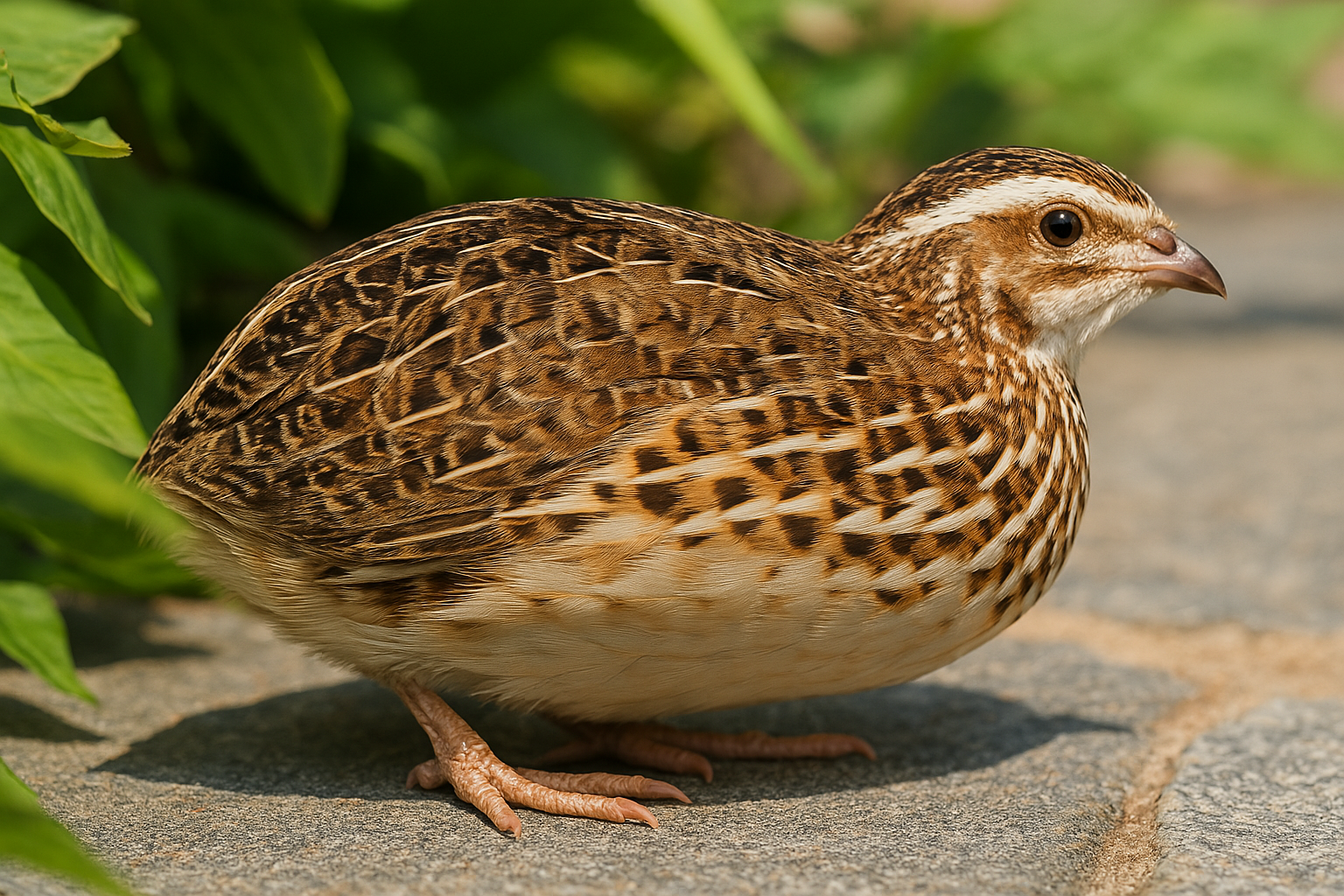
Lifespan
2-4 years
Height
10-15 cm
Length
14-18 cm
Quail Ratio
1 Male to 4-5 Females
Japanese quails (Coturnix japonica) are increasingly popular as pets due to their manageable size, easy care requirements, and the added benefit of egg production. Here’s a comprehensive guide on keeping Japanese quails as pets
Japanese Quail Call (Male Call) (also know as Coturnix)
Physical Characteristics
How many females to a male
This ratio balances high fertility rates with reduced stress and aggression. Fewer males per group minimize fighting, while ensuring each female isn't over-mated, leading to healthier hens and consistent egg production.
Size
Japanese quails (Coturnix japonica) typically measure about 14-18 cm (5.5-7 inches) in length from beak to tail. When standing, their height is generally around 10-15 cm (4-6 inches). They typically weigh between 90-120 grams (3.2-4.2 ounces).
Appearance
Their plumage is generally brown with a mix of lighter and darker streaks and spots, providing excellent camouflage in their natural habitat. Both males and females have distinctive markings. Males often have a reddish-brown coloration on their throat and breast, while females have a more uniformly mottled brown appearance with lighter, cream-colored underparts.
Lifespan
In captivity, Japanese quails have a lifespan of about 2-4 years, though with excellent care, some can live up to 5 years or more. In the wild, their lifespan tends to be shorter due to predators and environmental factors, averaging around 1-2 years.
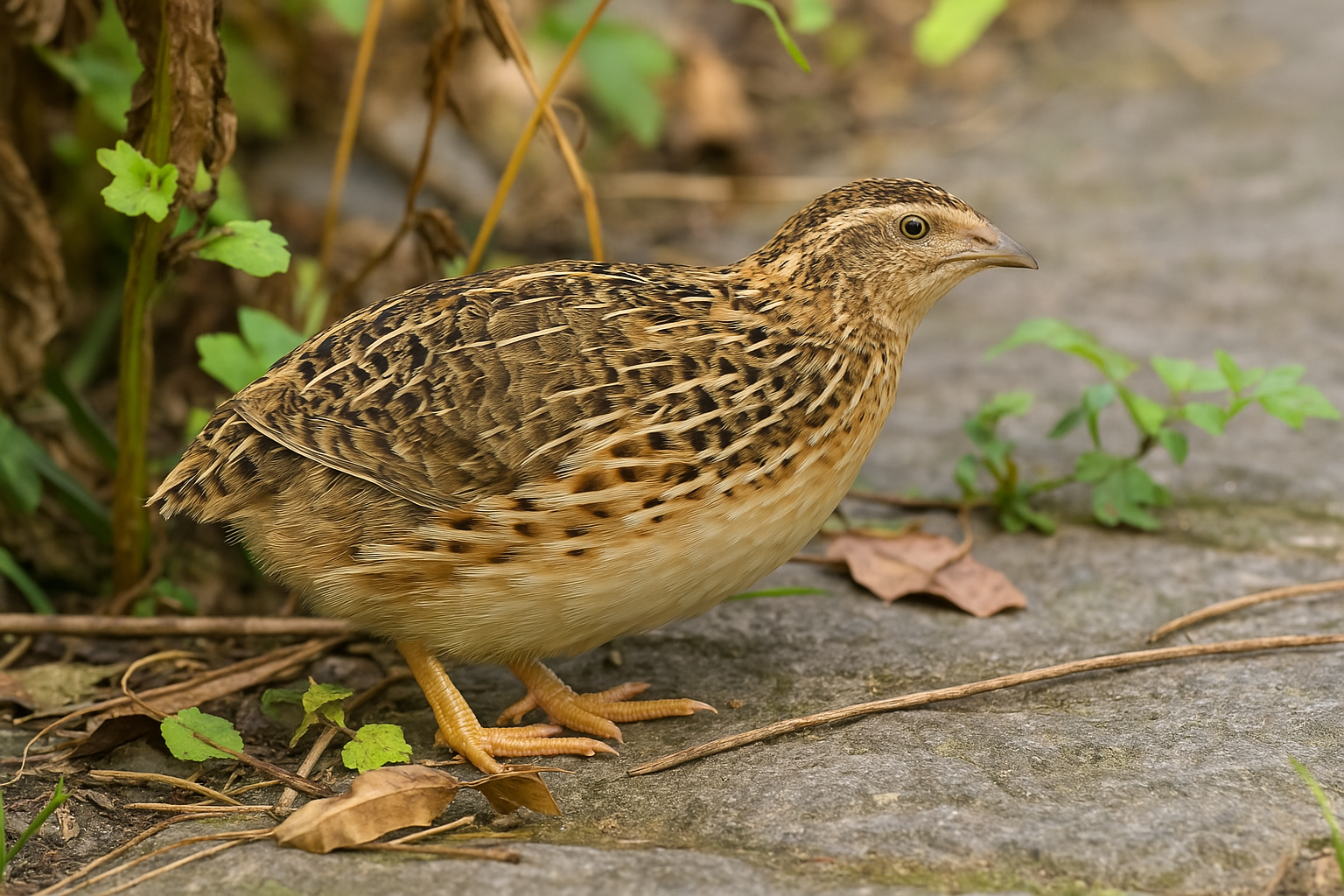
Habitat
Size of habitat
Provide a spacious enclosure, such as a cage or aviary, with a minimum of 0.5 square meters (about 5.4 square feet) per pair.
Substrate
Use soft bedding material such as straw, hay, or wood shavings to provide comfort and facilitate natural behaviors like scratching and dust bathing.
Shelter
Provide hiding spots and shelters to make the quails feel secure. This can include small boxes, plants, or other structures that mimic their natural environment.
Dust Bathing
Provide a container of sand or fine dust for dust bathing, which helps keep their feathers clean and free of parasites.
Protection
Ensure the enclosure is predator-proof and protected from extreme weather conditions. Offer fresh greens such as lettuce, spinach, and herbs.
Diet
Food
Use high-quality commercial quail feed with 20-24% protein content. Supplement their diet with seeds and grains like millet, corn, and wheat.
Protein
Occasionally provide mealworms, insects, or boiled eggs for additional protein.
Water
Fresh, clean water should be available at all times
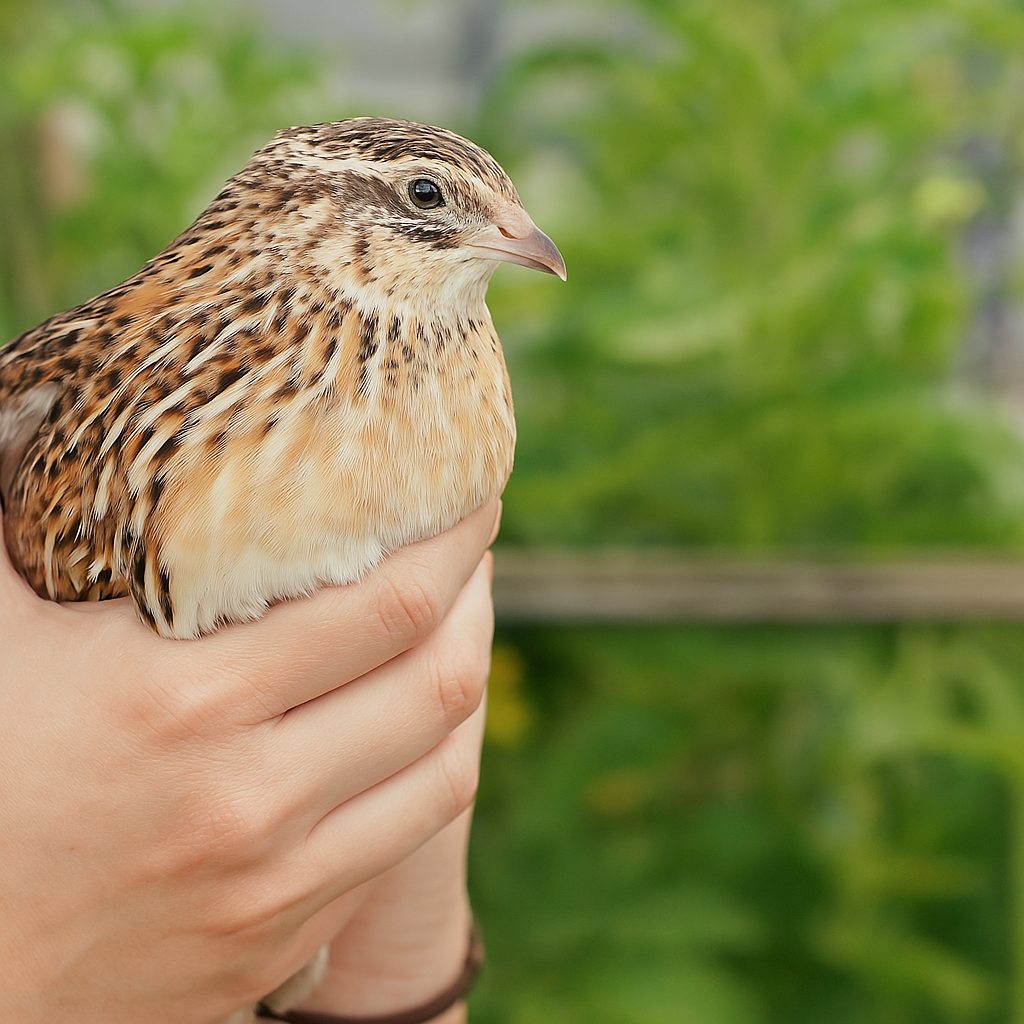
Social Behavior
Japanese quails are social and thrive in the company of their own kind. It's best to keep them in pairs or small groups to prevent loneliness and stress.
Activity
Quails love to peck and scratch the ground in search of seeds and insects, a natural behavior that keeps them mentally and physically stimulated. They spend their time foraging for food, dust bathing, and exploring their environment.
Handling
Approach quails slowly and calmly to avoid startling them. Sudden movements can cause them to become skittish or try to flee. Regular, gentle handling from a young age can help quails become more accustomed to human contact, reducing their natural fear.
Health
Clean Environment
Regularly clean the enclosure, food, and water containers to prevent bacterial growth and infections.
Health Monitoring
Watch for signs of illness such as lethargy, changes in eating habits, or abnormal droppings. Consult an avian veterinarian if needed.
History
Japanese quails are native to East Asia, including Japan, Korea, China, and parts of Russia. These quails were domesticated in Japan over a thousand years ago, primarily for their melodious calls, which were appreciated in Japanese culture.
Egg and Meat Production
Over time, the focus shifted from their calls to their utility as a source of eggs and meat. By the early 20th century, Japanese quails were widely bred for these purposes.
Global Spread
In the mid-20th century, Japanese quails were introduced to Europe and North America. They quickly became popular in the poultry industry and among hobbyists.
Modern Day
Japanese quails have gained popularity as pets due to their manageable size, ease of care, and egg-laying capabilities.
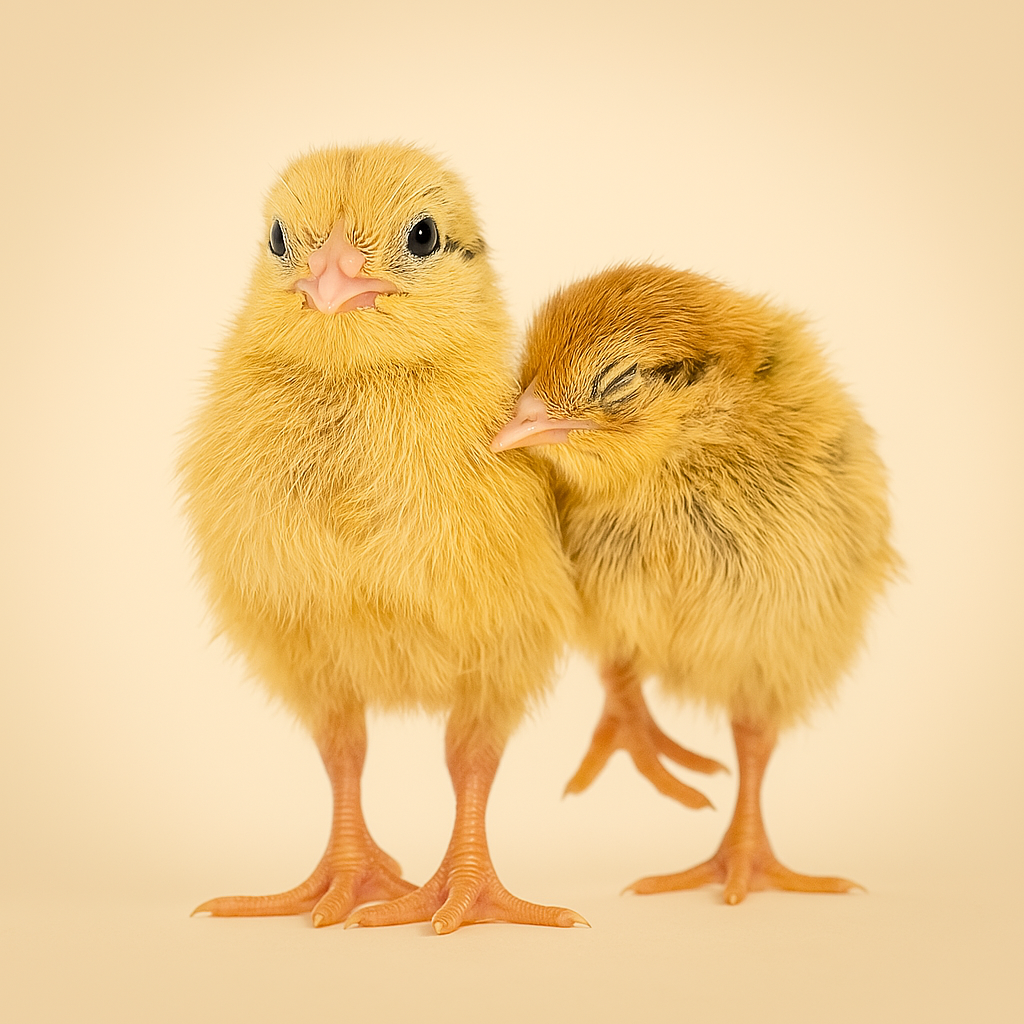
Breeding
Breeding Season
Japanese quails breed mainly in spring and summer. Females lay eggs after reaching 6-8 weeks age.
Nesting
Provide nesting materials like straw or grass in a quiet, sheltered area of the enclosure. Females lay clutches of 5-15 eggs. They require a quiet, sheltered nesting area. Incubation lasts about 17-18 days.
Quail Chick Care
Brooder Setup
Temperature: Keep the brooder at 37.5°C (99.5°F) for the first week, then gradually lower it by 1°C (1.8°F) per week.
Feeding
Provide a high-protein game bird starter feed (24-28% protein) to support rapid growth.
Feeder and Waterer
Use shallow feeders and waterers to prevent chicks from drowning. Marbles or pebbles can be placed in water dishes to keep chicks safe.
Outdoor Transition
Once chicks are fully feathered and can regulate their body temperature, usually at 4-6 weeks old, they can be gradually introduced to an outdoor environment if the weather is suitable.
Joining the adults
Integration with Adults
Carefully introduce chicks to adult quails when they are similar in size to avoid bullying. Supervise initial interactions to ensure a smooth transition.
Observe Behavior
Watch for signs of aggression or bullying from the adults. If the chicks are significantly smaller or weaker, they may need more time before integration.

Fun Fact
To communicate with each other, they use 28 different call types; males and females produce different vocalizations. The typical call of the Japanese quail is characterized by a 'deep hollow' sound that precedes a final, major trill.
In this article
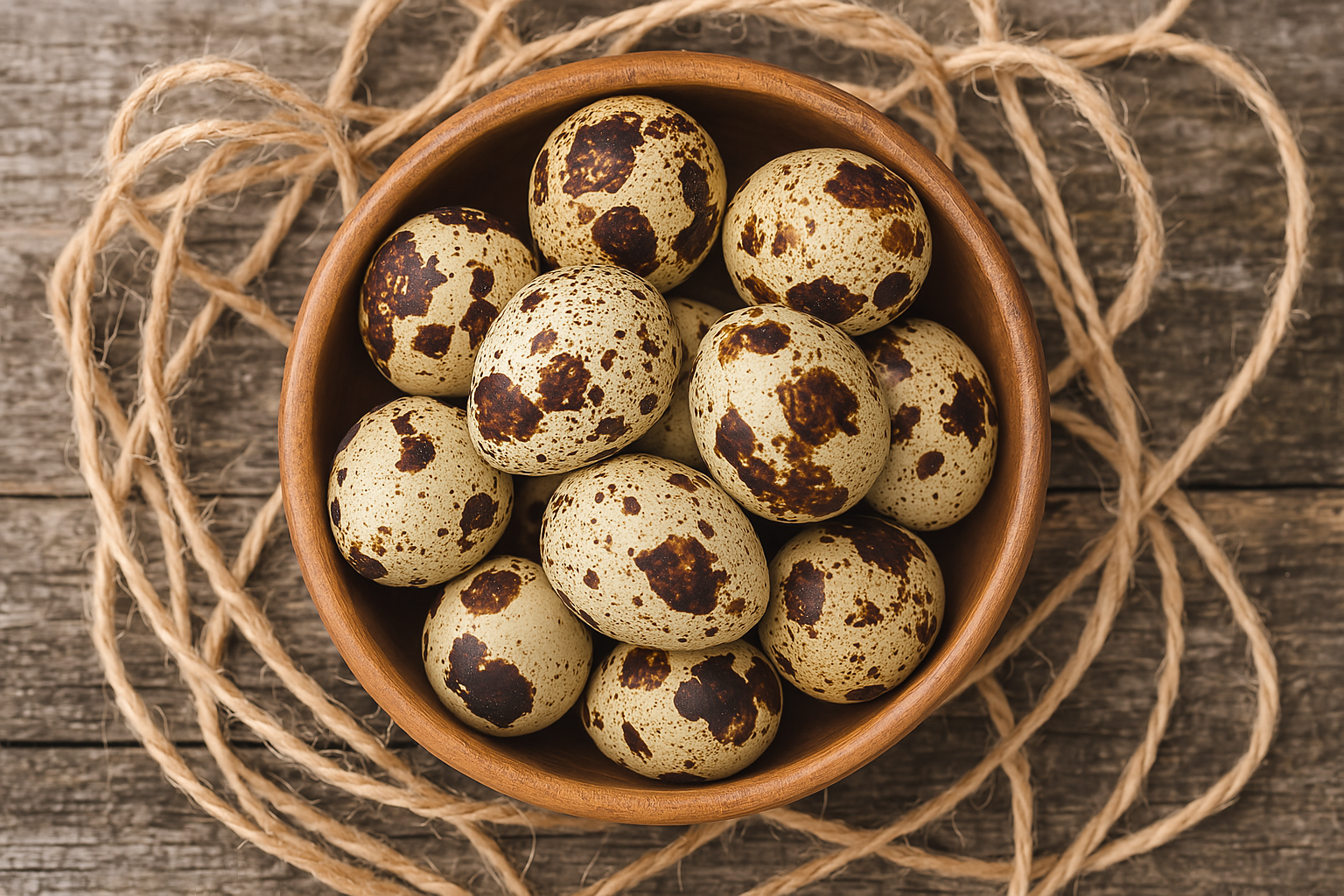
Eggs
Japanese quail eggs are small, typically weighing around 9-12 grams. They have a smooth, glossy shell, which is usually light brown or cream-colored, with dark speckles across the surface. The eggs are slightly smaller than chicken eggs, making them a popular choice for gourmet dishes. Their delicate appearance and rich flavor make them highly sought after in culinary applications.
Legal Considerations
Check local laws and regulations regarding the keeping of quail. Some areas may have specific requirements or restrictions.
Permits
In some regions, permits may be required to keep or breed quail.
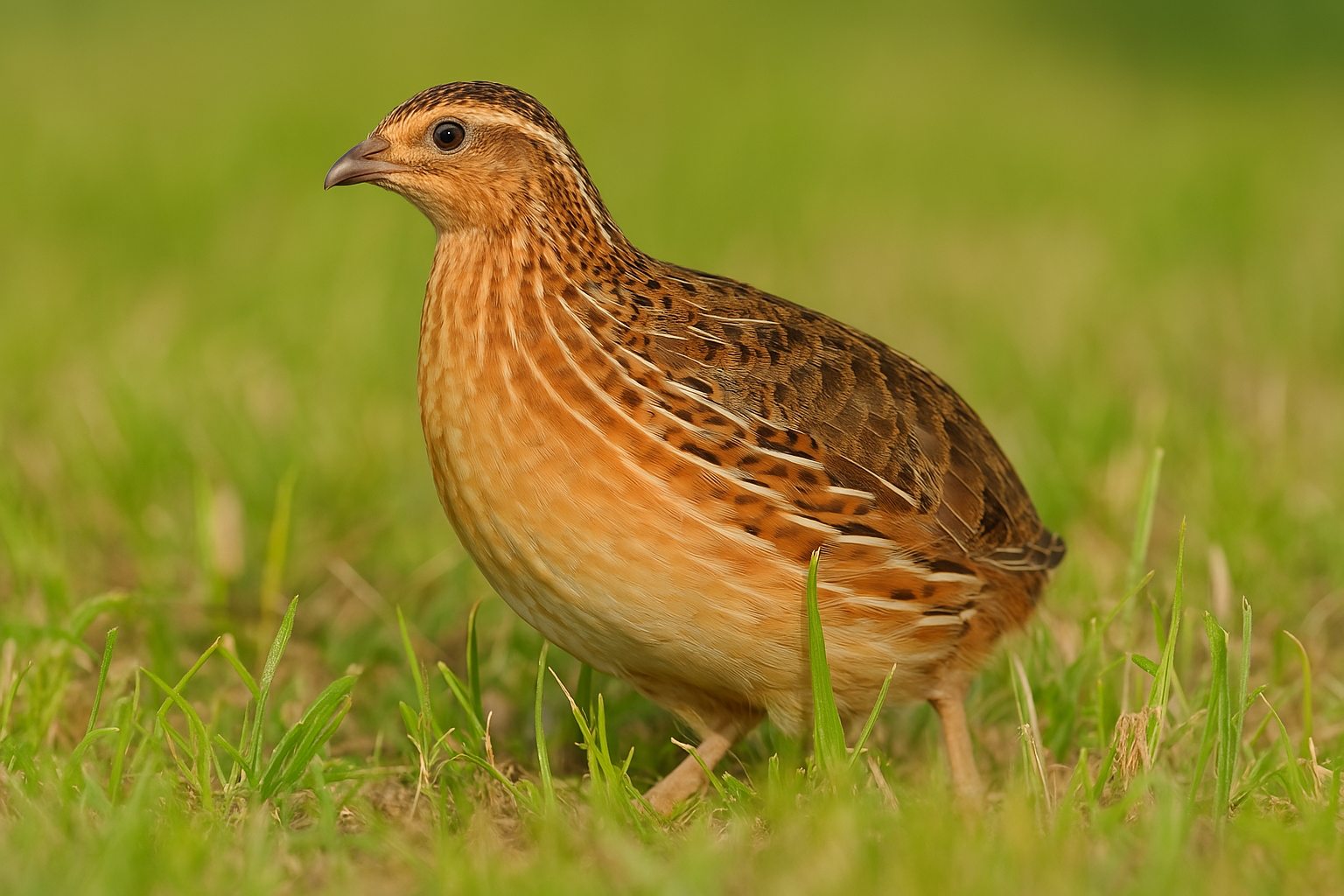
Common Quail
Keeping the Common Quail (Coturnix coturnix) as a pet can be challenging due to its migratory nature, natural behaviors, and specific care requirements. While they are primarily kept for agricultural purposes in some regions, providing suitable conditions for them as pets requires careful consideration.
Read more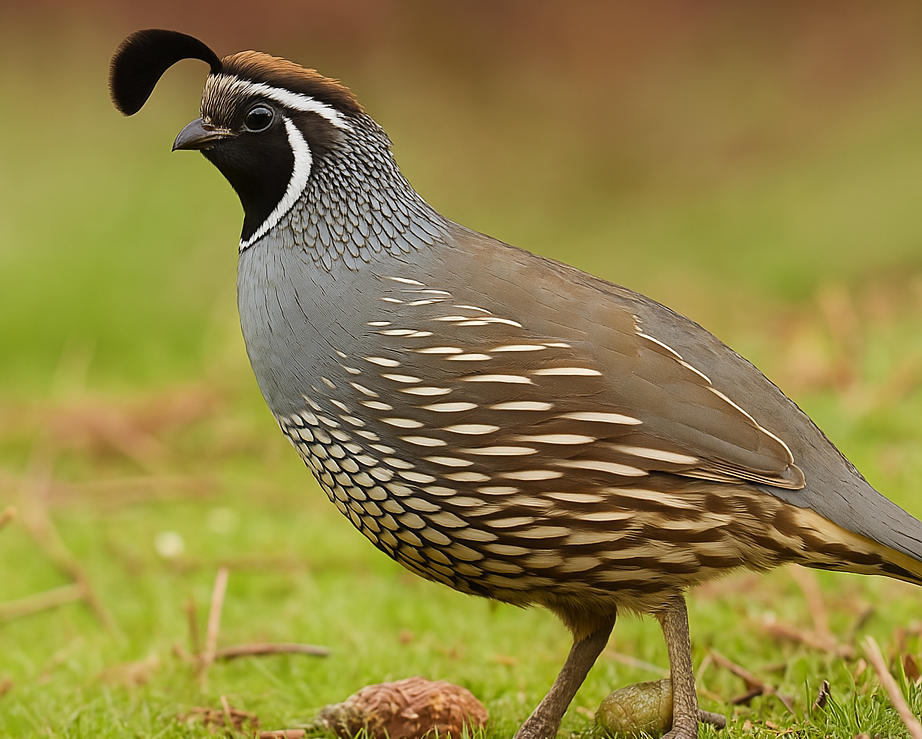
California Quail
The California Quail (Callipepla californica) is a charming and distinctive bird known for its plump body, beautiful plumage, and characteristic head plume, often referred to as a "topknot." These birds are native to the western United States but can be kept as pets with proper care and attention. Here's a comprehensive look at keeping California Quail as pets
Read more
Jumbo Celadon Quail
Jumbo Celadon Quail, also known as Coturnix quail, are a popular breed among poultry enthusiasts due to their distinctive blue or light green eggs, larger size, and efficient egg production. They are a selectively bred variety of the standard Coturnix quail, known for their increased body weight and unique egg coloration.
Read more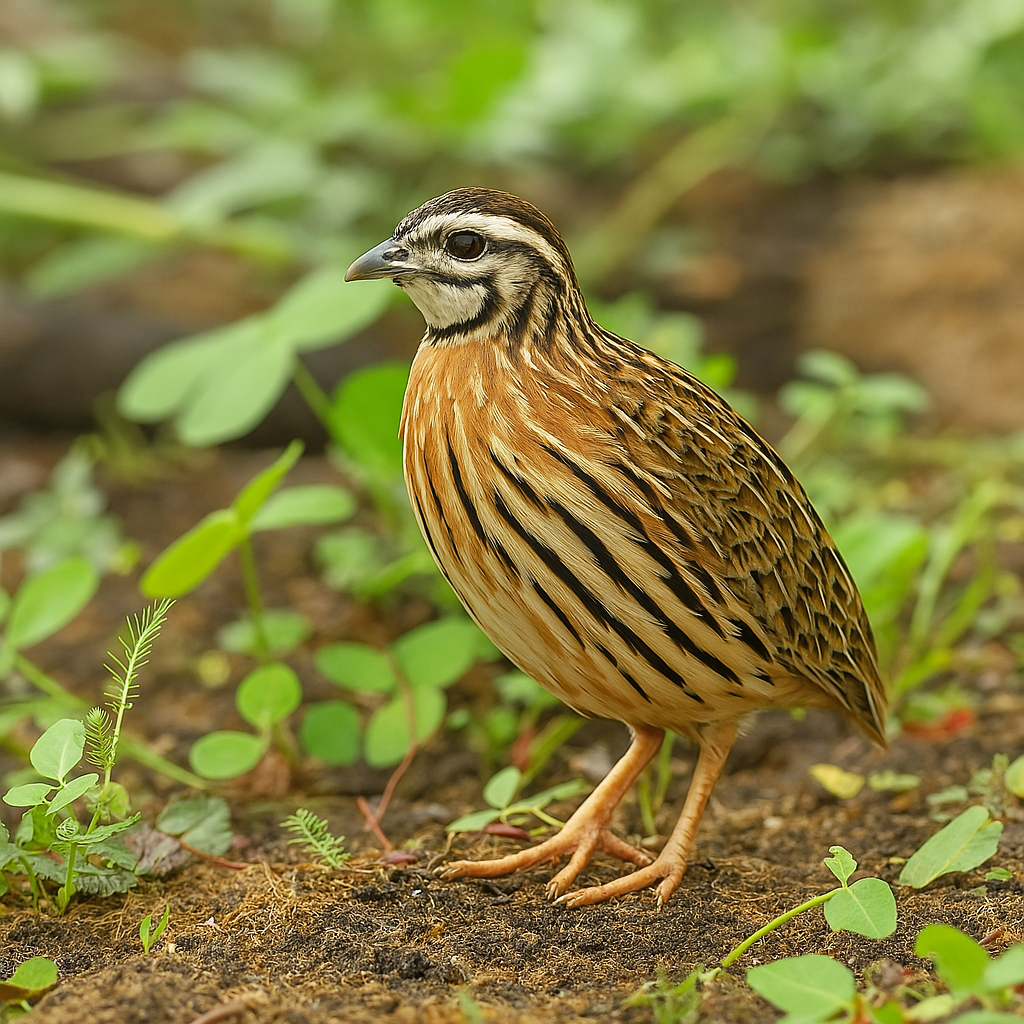
Rain Quail
Keeping Rain Quail (Coturnix coromandelica) as pets can be a rewarding experience for bird enthusiasts, although they require specific care to thrive in captivity. Here’s what you need to know about keeping Rain Quail as pets:
Read more
Bobwhite Quail
The Bobwhite Quail, also known as the Northern Bobwhite or Virginia Quail (Colinus virginianus), known for their distinctive call and charming appearance, can make unique and interesting pets. Bobwhite quail Have long been popular in North America. They require specific care and habitat conditions to thrive in a domestic setting.
Read more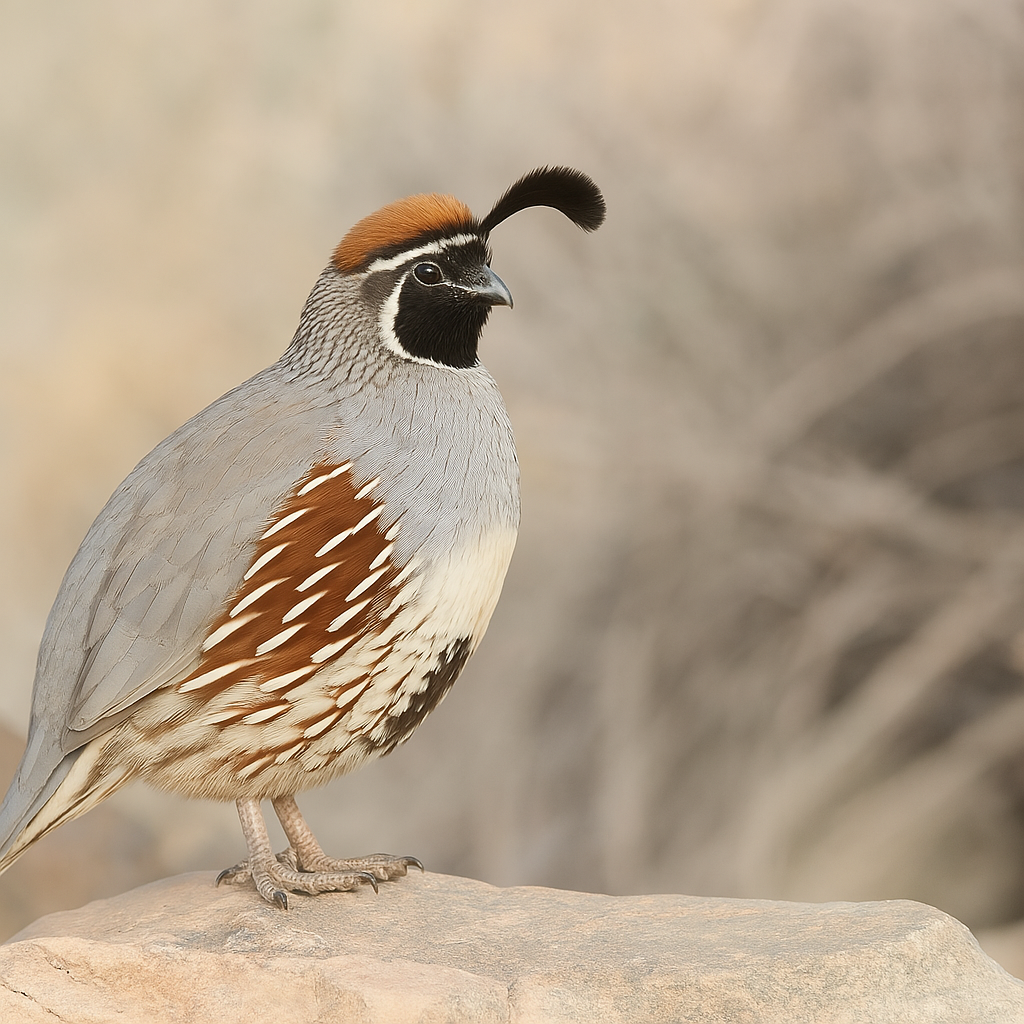
Gambel's Quail
Gambel's Quail (Callipepla gambelii) are popular birds for aviculture due to their attractive appearance, distinctive calls, and relatively calm demeanor. While primarily known as wild birds, Gambel's Quail can be kept as pets under the right conditions, although they have specific care requirements.
Read more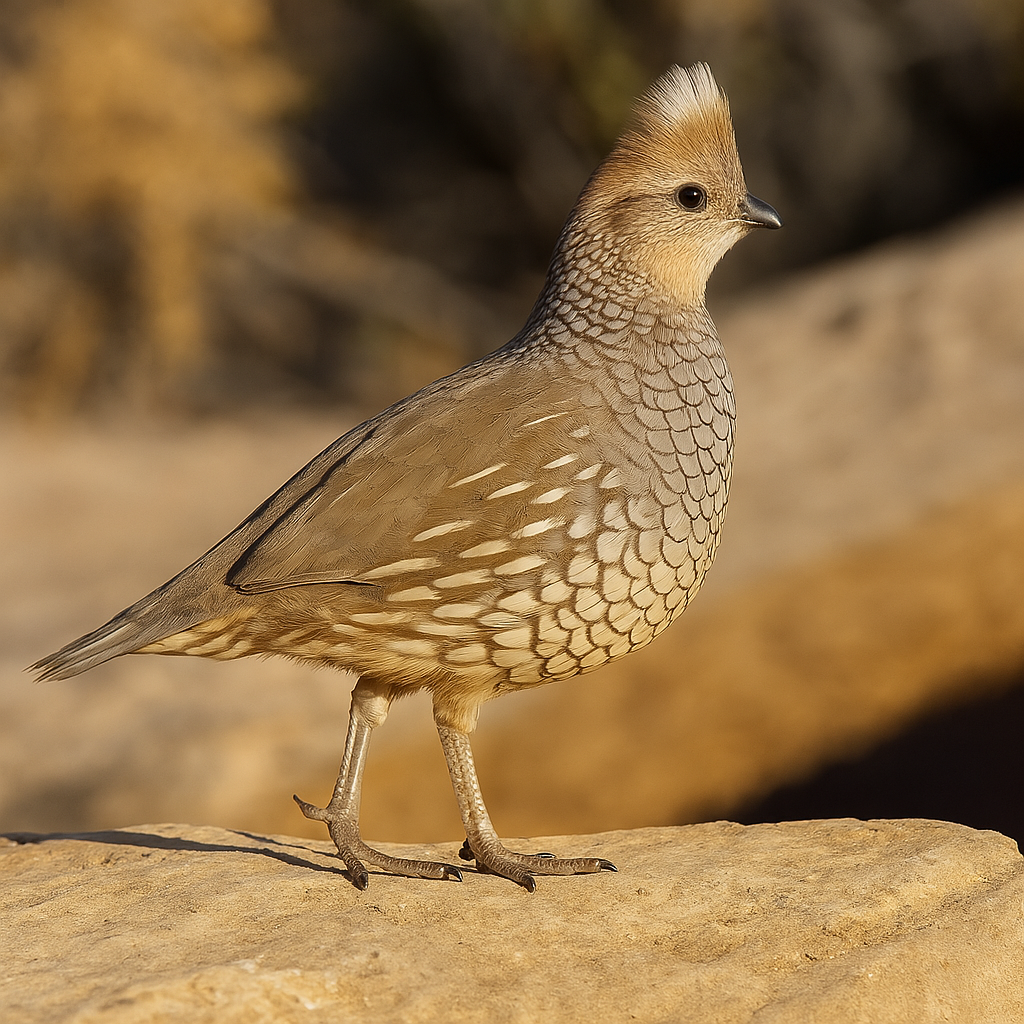
Scaled Quail
The Scaled Quail, known for its unique scaly feather pattern, is an active bird that needs space and a secure environment. Though more skittish than other quail, with proper care, they can live 3-6 years in captivity.
Read more